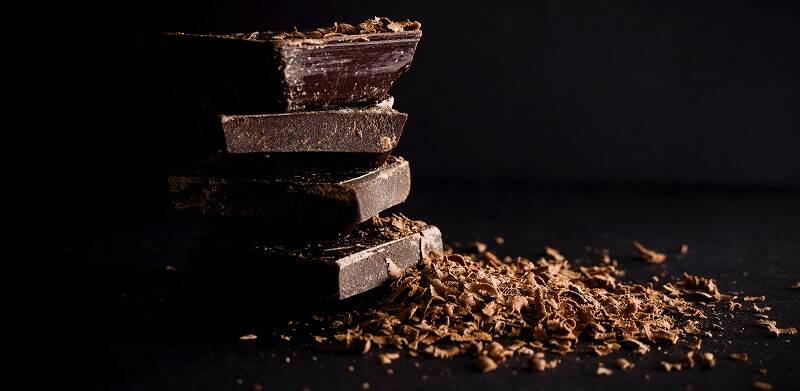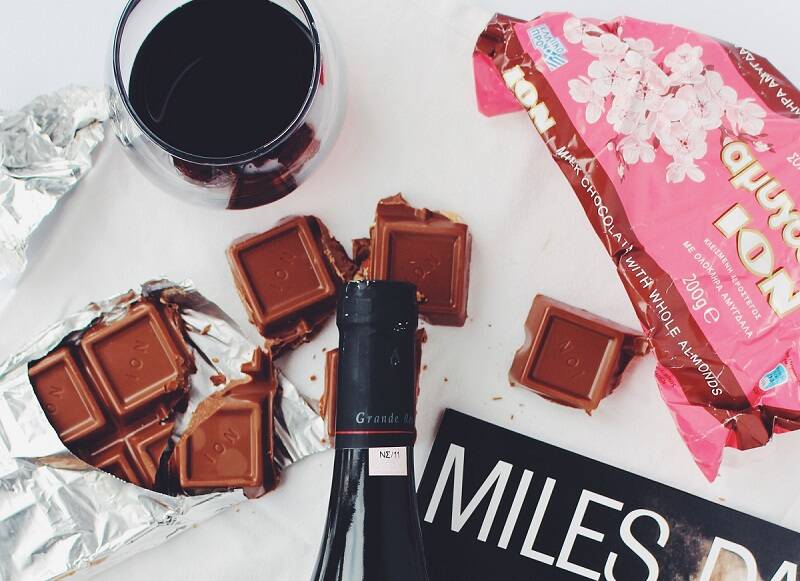Tips to enjoy Sherry wine even more
By now, we believe that no true winelover would question the fact that the wines of El Marco de Jerez are among the best wines in Spain.

The chocolate industry is worth billions of euros every year. To give us an idea of how much value chocolate generates in the world, the top 10 confectionery companies have a turnover of more than 67 billion dollars a year, according to a Candy Industry report from 2021.
Today we wanted to pay a small tribute to this delicious food by highlighting the different possibilities of consuming chocolate and wine, two passions that can bring us comforting moments. In these suggestions we have decided to avoid the most classic and well-known combinations, those of sweet wine and chocolate, so we won't see any muscat, pedro ximénez, malvasía, etc...
There are different types of chocolate, dark, white, milk, ruby and also different ways of working and presenting it, in bars, cream or mixed with an endless number of ingredients. Each type has different organoleptic qualities and also different textures, something that should also be taken into account when choosing the wine.
It is common that at a dinner with friends we arrive at the dessert with wine still on the table. Or even that we decide to order a bottle specifically for the sweet. Today we present several proposals, from the most elementary and basic to the most daring. The relationship between wine and chocolate is not new and more and more people are reserving a space to enjoy this delicacy with wine.
The answer is: good, otherwise we wouldn't be writing this post. It is important to know which chocolate we are going to have in order to choose the wine in the most effective way.

Dark chocolates with a high percentage of purity are the ones that offer the greatest possibilities. Their characteristic bitterness offers infinite possibilities. Sherry wines are excellent allies of dark chocolate; well, of dark chocolate and many other foods. The different types of wines that prevail in the region offer a variety of alternatives. For instance, the Regulatory Board for Sherry and Manzanilla de Sanlúcar tells us on its website about the different options available. Among them, we will focus on two:
Manzanilla de Sanlúcar and dark chocolate: it is certainly an unusual combination, but we encourage you to try it out. What synergies can we find here? On the one hand, we are faced with a very dry wine, which will contrast with the unctuous sensation that the pure cocoa gives us, regardless of the way it is presented, whether it is creamy or solid. Manzanilla is also characterised by its saline aromas, and salt and chocolate go perfectly together. In fact, this salt enhances the flavour of the chocolate. There is also a very interesting combination of bitterness, that of wine and manzanilla. It would be a very enjoyable and not at all cloying end to the party.
Palo Cortado and dark chocolate: the most mysterious wine from Jerez allows us to take advantage of its uniqueness to enjoy a bitter chocolate, as the wine provides everything that chocolate does not. We are talking about combining it with a pure chocolate, without nuts, which are naturally provided by the Palo Cortado. The explosion in the mouth is guaranteed with this high-flying blend.
Long-aged red wines and milk chocolate: there is an unfounded belief that red wine does not go well with chocolate. Nothing could be further from the truth. There are excellent combinations between these two players. For example, if we move away from pure chocolate and enter the world of chocolate confectionery, we find a classic: milk chocolate. This chocolate format can be found in an infinite number of desserts, so it is easy to find yourself in this situation in a restaurant. Milk chocolate can have hazelnut, such as praline, and can be perfectly matched with wines where wood and its nuances are very present. Remember that some red wines with high levels of barrel ageing tend to have nuances such as vanilla or even chocolate. The greater the presence of wood in the wine, the better its combination with chocolate will be. Moreover, if the wine also has high levels of maturity, we will see how its sweet tannin and its final sweetness will combine perfectly with our dessert. We warn you that we have entered into levels of sweetness for those with a serious sweet tooth.

Sparkling wines and white chocolate: we are approaching a link between wine and chocolate based on contrast. In order to visualise it, we have to see white chocolate as the fattiest of chocolates. It may not be the most appreciated by gourmets, but it is undoubtedly capable of offering sweet moments of pleasure. What would happen if we add a sparkling wine, slightly bitter and with a sharp acidity to a product that is mainly composed of cocoa butter? In this sensory experience we will see how the acidity of the wine cuts through the fatty palate that this type of chocolate gives us. The combination is not suitable for all consumers, but we can tell you that it is worth a try. For this we can go for a sparkling Cava, preferably Brut, as it has some sugar that will soften the contrast, although if they like stronger experiences they can go for a Brut Nature, much drier and bitter.
You already have some guidelines to follow. The best thing to do in these cases is to experiment; the world of harmonies or combinations between wine and food offers us infinite possibilities, some of which are truly surprising and unimaginable.
By now, we believe that no true winelover would question the fact that the wines of El Marco de Jerez are among the best wines in Spain.
The debate is on: does wine and cheese go well together? There has been much discussion on the subject for decades.
Cava, whose identity revolves exclusively around wines with secondary fermentation in bottle, is still in the midst of a process of change in favour of zoning and segmentation